2020年上海高考英语真题及答案
第 I 卷 (共 100 分)
I. Listenin
g Section
A
Directions: In Section A, you will hear ten short conversations between two
speakers. At the end of each conversation, a question will be asked about what
was said. The conversations and the questions will be spoken only once. After
you hear a conversation and the question about it, read the four possible
answers on your paper, and decide which one is the best answer to the question
you have heard.
1. A. In a church. B. In the man’s home. C. In a restaurant. D. In a furniture
store.
2. A. She was excited.
B. She was very nervous.
C. She was very confident.
D. There was something wrong with her heart.
3.
A. She is full.
C. She is ill.
B. She doesn’t like that
snack bar.
D. She is going to see the
doctor.
4. A.150 pounds.
5. A. He couldn’t spell the words.
B.110 pounds.
C.50 pounds.
D.100 pounds.
B. He did well in spelling.
C. He reckoned that it was hard to say.
D. He didn’t do well in contest.
D. Depressed.
6. A. Concerned.
7. A. They are talking about a fitness coach.
B. Satisfied.
C. Relaxed.
B. They are discussing about the former firm.
C. They are talking about their former colleague.
D. They are talking about their friends’ school.
8. A. Young people weren’t satisfied with the lecture.
B. The lecture was very successful.
C. Drinking water was banned in the lecture.
D. The lecture made people feel thirsty.
�
9. A. The boss.
10. A. He already has one calculator.
B. Tom.
C. The woman.
D. The man.
B. He doesn’t like the solar-powered calculator.
C. He is good at calculating.
D. He would like to have a different present.
Section B
Directions:
In
Section
B,
you
will
hear
two
passages
and
one
longer
conversation. After each passage or conversation, you will be asked several
questions. The passages and the conversation will be read twice, but the
questions will be spoken only once . When you hear a question, read the four
possible answers on your paper and decide which one is the best answer to the
question you have heard.
Question 11 through 13 are based on the following passage.
11. A.1938.
B.1939.
C.1942.
D.1948.
12. A. Because most Australians couldn’t afford it.
B. Because the war broke out.
C. Because the flying boats were out of dated.
D. Because land-based aircraft had developed rapidly.
13. A. The price of flying boats.
B. The development of Rose Bay.
C. The surprising history of flying boats. D. The advancement of flying boats.
Question 14 through 16 are based on the following passage.
14. A. They have various skills.
B. They are well organized.
C. They can solve difficult problems. D. They have creative ideas.
15. A. Disorderliness might result in creativity.
B. Creativity might lead to messiness.
C. Smarter people believe that cleanliness is not important.
D. Messiness helps cultivate creativity.
16.
A. The qualities of
intelligent people.
B. The misunderstanding of creativity.
C. The relationship between creativity and messiness.
D. The components of creativity.
Question 17 through 20 are based on the following conversation.
17.
A.A new research into the human
brain.
�
B. The advantages of men and women.
C. The different connections in brain in men and women.
D. The study on two sides of the brain.
18.
A. In men’s brains, there are stronger connections in two
sides of the brain.
B. In men’s brains, there are stronger connections in each half
of the brain.
�
C. The connections in men’s brain are not so strong as those in women’s brain.
D. There is nothing different between male and female brain.
19. A. Multitask.
20. A. The different-connection theory is not convincing.
B. Map reading.
C. Cycling.
D. Performing a single task.
B. He holds a neutral attitude to the research findings.
C. The connections inside the brain will not change immediately.
D. He disagrees with the new findings and thinks the connection inside the
brain is complex and changeable.
II. Grammar & Vocabulary
Section A
Directions: After reading the passage below, fill in the blanks to make the
passage coherent and
grammatically correct. For the blanks with a given word, fill in each blank
with the proper form of the given word; for the other blanks, use one word that
best fits each blank.
Start With the End and Work Backwards
When Jason Hoelscher was an undergraduate of fine art studies, there weren’t
any professional development classes. So ambition and the timely realization
(21)
he
would
have
to
determine
“what’s next” on his own urged Jason to engage his future self to find
direction. It was 1996,and he was finishing his BFA(Bachelor of Fine Art) in
Denver. He was faced with the choice of
sitting
back
to
wait
for
something
(22)
(happen),or
pursuing
a
path
into the unknown. He chose the latter.
Jason set up a plan that in five years he (23)
(show)
his work in the top gallery in that area of the
country.
This five-year goal
gave him a
starting point (24)
which to work backwards.
By setting the goal, all of Jason’s efforts (25)
(point) in the same
direction. He showed
up
at
different
art
show
openings,
and
researched
as
best he
could
to
make
(26)
familiar
with
the
market
environment.
As
a result
of showing up, Jason
took opportunities (27)
got
him
closer to his goal. He sent work to a student show and was accepted by Robin
Rule, the owner of Rule Gallery.(28)
(inspire),Jason
spent the next month making new work.
In April of 1997,Jason went back to Rule Gallery with his
new work.(29)
�
scare
d to death, he looked confident at the gallery meeting. When he left, he left
as the newest addition to the Rule Gallery roster ( 花 名 册 ),He had his first
exhibition there one year later.
Jason could have stopped with the show selection, but what he really wanted
was gallery
representation. He struck while the iron was hot, and in (30) (do)
so,
shortened his five-year plan into a year-and-a-half.
Section B
Directions: Fill in each blank with a proper word chosen from the box. Each word
can be used
�
only once. Note that there is one word more than you need.
A. repetitive
B. continually
C. alerts
D. pattern
E. locate
F. mental
G. challenge
H. network
I. evolving
J. reversely
K. literacy
Bill Drayton believes we’re in the middle of a necessary but painful
historical transition. For millenniums most people’s lives had a certain
31 .You went to school to learn a trade or a skill-baking, farming or
accounting. Then you could go into the workforce and make a good living
repeating the same skill over the course of your career.
But
these
days
machines
can
do
pretty
much
anything
that’s
32
.The
new
world requires a different sort of person. Drayton calls this
new sort of personal changemaker.
Changemakers are people who can see the patterns around them, identify the
problems in any situation, figure out ways to solve the problems in any
situation, figure out ways to solve the problem,
organize
fluid
teams,
lead
collective
action
and
then
33
adapt as situations change.
For example, Ashoka fellow Andrés Gallardo is a Mexican who lived in a high
crime neighborhood. He created an
app,
called
Haus,
that
allows
people
to
34
with
their
neighbors. The app has a panic button that
35
everybody in the neighborhood when a
crime is happening. It allows
neighbors to organize, chat, share crime statistics and work together.
To form and lead this community of communities, Gallardo had to possess what
Drayton calls “cognitive empathy-based living for the good of all.” Cognitive
empathy is the ability to perceive how people are feeling in
36
circumstances. “For the good of all” is the capacity to build teams.
It doesn’t matter if you are working in the cafeteria or the inspection
line of a plant, companies will now only hire people who can 37 problems and
organize responses.
Millions of people already live with the mind-set. But a lot of people
still inhabit the world of following rules and repetitive skills. They hear
society telling them: “We don’t need you. We don’t need your kids, either.”
Of course, those people go into reactionary mode and strike back.
The central
38
of our time, Drayton says, is to make everyone a
�
changemaker. In an earlier
era,
he
says,
society
realized
it
needed
universal
39
.Today,schools
have
to
develop the curriculums and
assessments
to
make
the
changemaking
mentality
universal.
They
have
to
understand this is their criteria for success.
Ashoka has studied social movements to find out how this kind of
40
shift
can be
promoted. It turns out that successful movements take similar steps.
III. Reading Comprehension
Section A
�
Directions: For each blank in the following passages there are four words or
phrases marked A,B,C and D. Fill in each blank with the work or phrase that
best fits the context.
More people are travelling than ever before, and lower barriers to entry
and falling costs means they are doing so for 41 periods.
The rise of “city breaks” 48-hour bursts of foreign cultures, easier on
the pocket and annual leave
balance
has
increased
tourist
numbers,
but
not
their
42
spread.
The
same
attractions have been used to market
cities such as Paris, Barcelona and Venice for decades, and visitors use the
same infrastructure as residents to reach them. “Too many people do the same
thing at the exact same time,” says Font. “For 43 ,the city no longer belongs
to them.”
This starts with marketing, says Font, who notes that Amsterdam has started
advising visitors to seek
44
outside of the city centre on its
official website. “That takes some balls, really,
to do that. But only so
many people will look at the website, and it means they can say to their
residents they’re doing all they can [to ease congestion].”
But it also 45 a better way, it is called “detourism” :sustainable travel
tips an
46 itineraries for exploring an authentic Venice, off the paths beaten
by the 28 million
visitors who flock there each year.
A
greater
variety
of
47
for
prospective
visitors
------
ideas
for
what
to
do
in off-peak seasons, for example, or outside of the city
center can have the effect of diverting
them from already saturated
landmarks,
or
48
short breaks away in
the
first place.
Longer stays
49
the pressure, says Font. “If
you go to Paris for two days, you’re going to go to the Eiffel Tower. If you
go for two weeks, you’re not going to go to the Eiffel Tower 14 times.”
Similarly,
repeat visitors have a better sense of the
50
,
“We
should be asking how
we get tourists to
51
,not how to get
them to come for the first time. If they ‘re coming
for the fifth time, it
is much easier to integrate their behavior with ours.”
Local governments can foster this sustainable activity by giving preference
to responsible operator and even high-paying consumers. Font says cities could
stand to be more selective about the tourists they try to attract when the
�
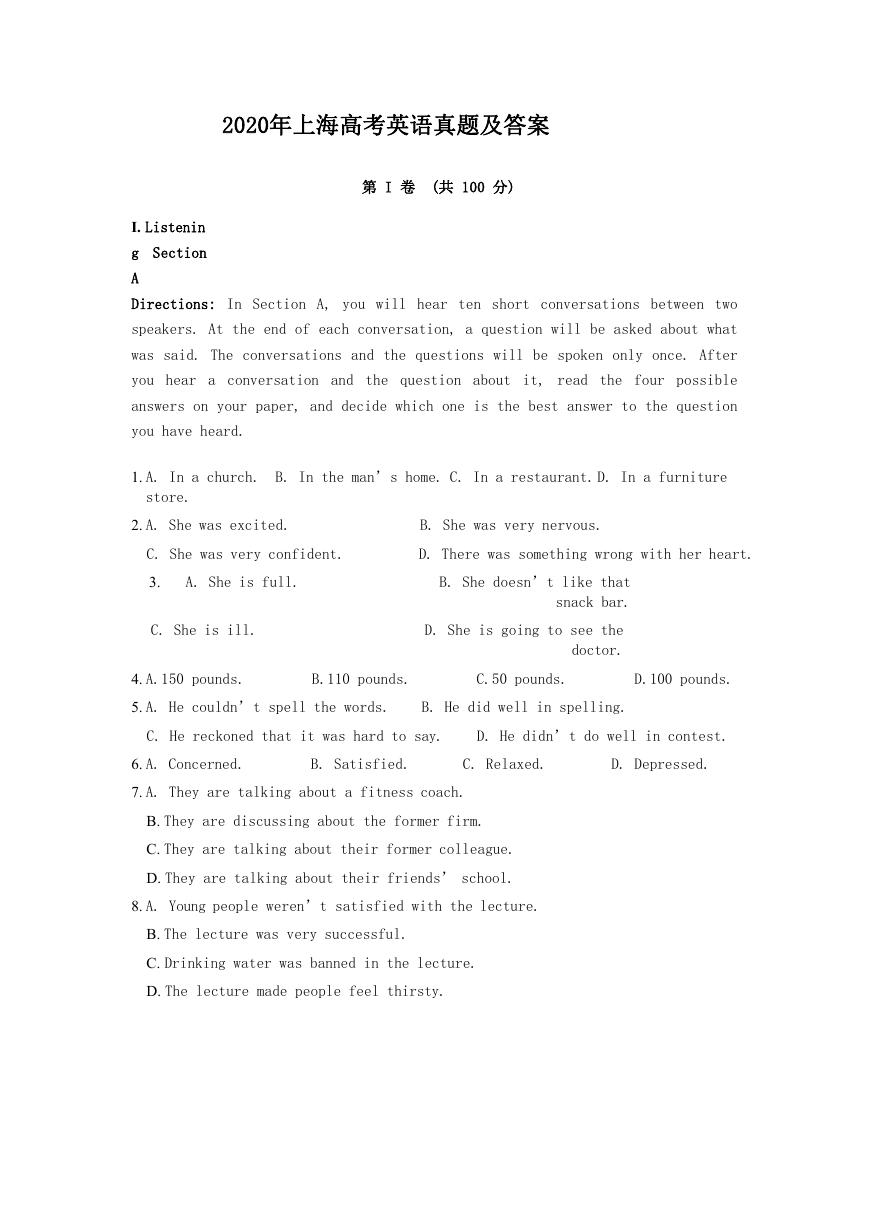
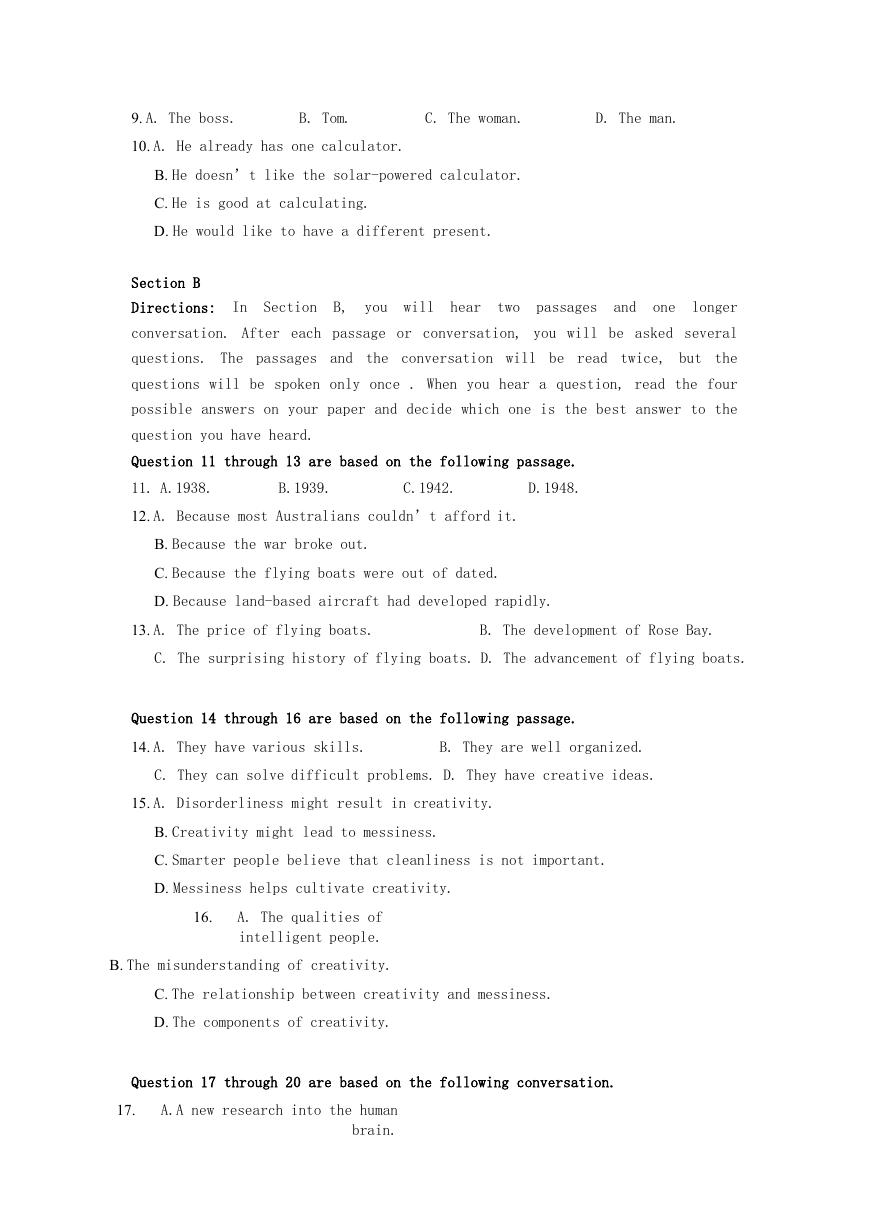

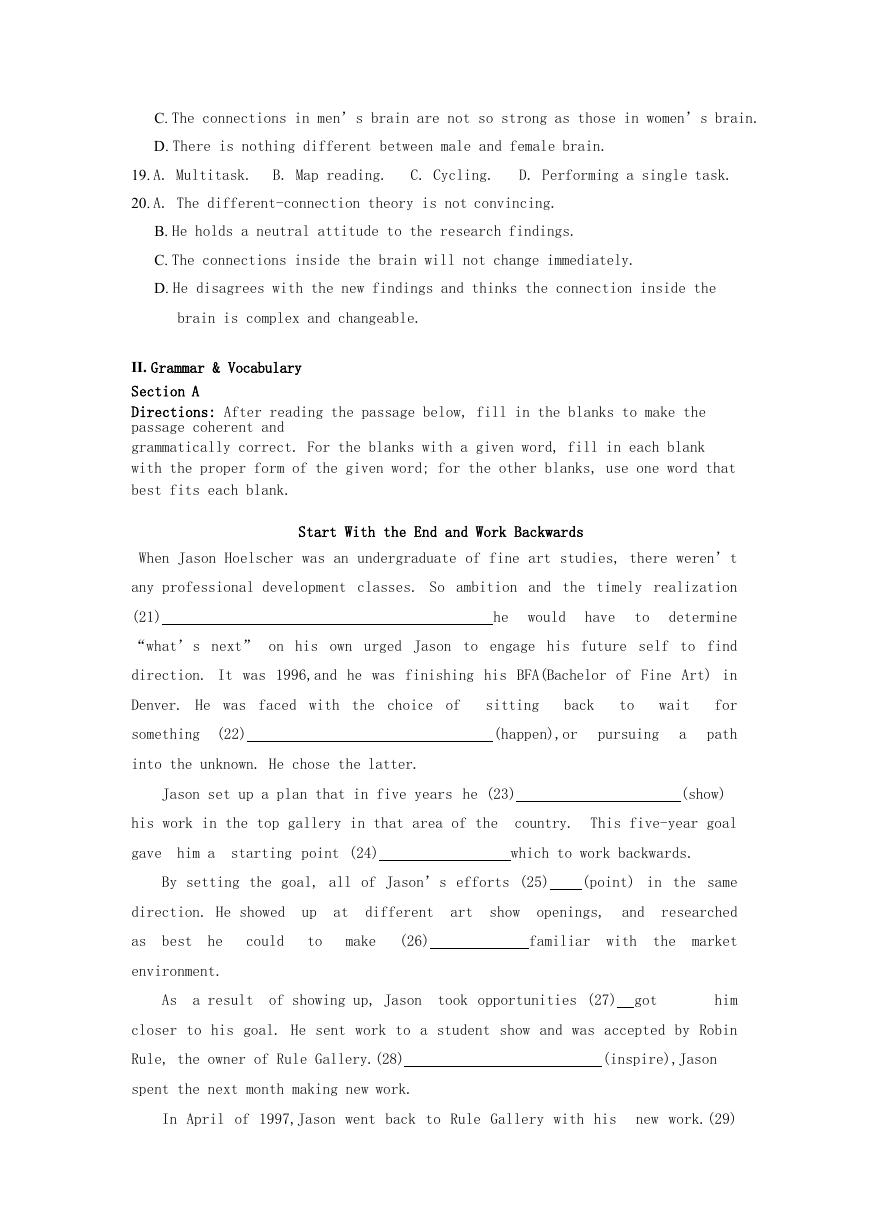

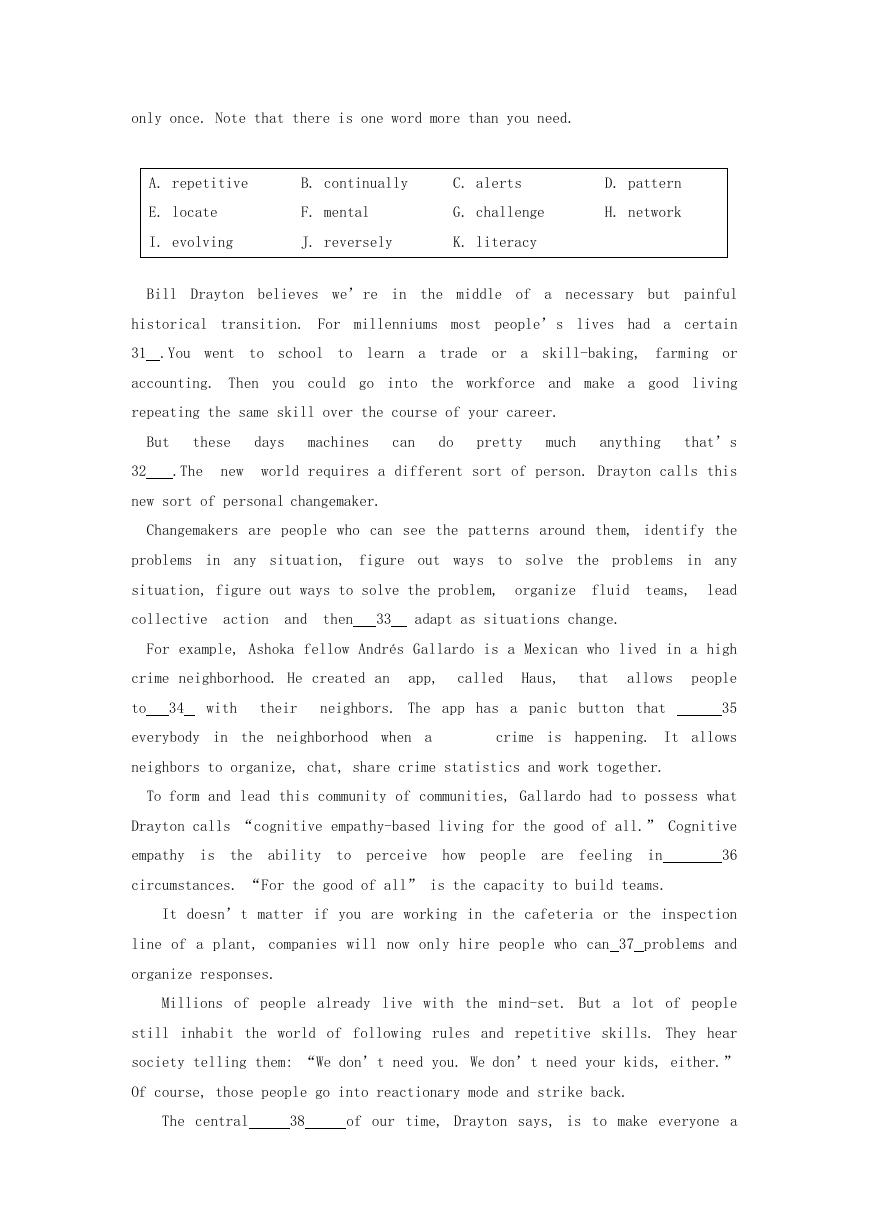
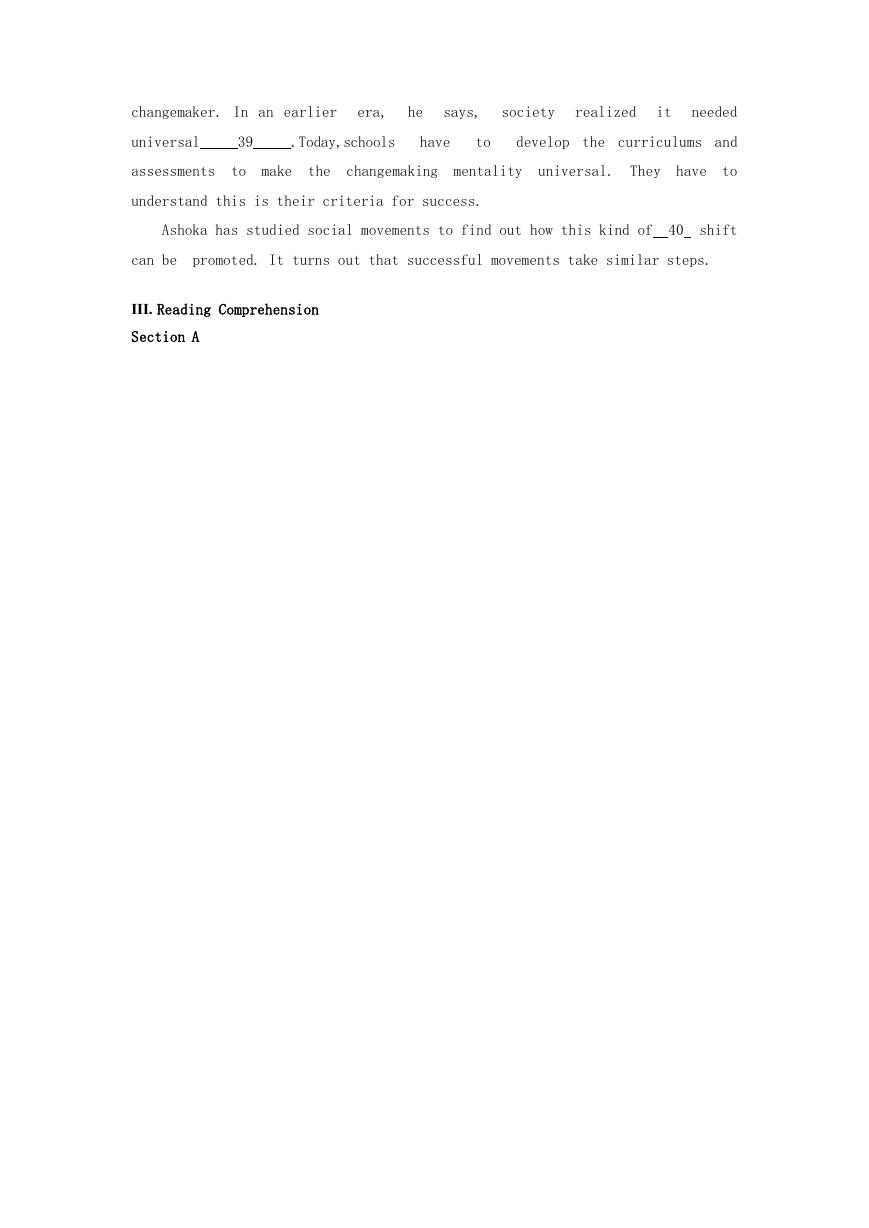









 2023年江西萍乡中考道德与法治真题及答案.doc
2023年江西萍乡中考道德与法治真题及答案.doc 2012年重庆南川中考生物真题及答案.doc
2012年重庆南川中考生物真题及答案.doc 2013年江西师范大学地理学综合及文艺理论基础考研真题.doc
2013年江西师范大学地理学综合及文艺理论基础考研真题.doc 2020年四川甘孜小升初语文真题及答案I卷.doc
2020年四川甘孜小升初语文真题及答案I卷.doc 2020年注册岩土工程师专业基础考试真题及答案.doc
2020年注册岩土工程师专业基础考试真题及答案.doc 2023-2024学年福建省厦门市九年级上学期数学月考试题及答案.doc
2023-2024学年福建省厦门市九年级上学期数学月考试题及答案.doc 2021-2022学年辽宁省沈阳市大东区九年级上学期语文期末试题及答案.doc
2021-2022学年辽宁省沈阳市大东区九年级上学期语文期末试题及答案.doc 2022-2023学年北京东城区初三第一学期物理期末试卷及答案.doc
2022-2023学年北京东城区初三第一学期物理期末试卷及答案.doc 2018上半年江西教师资格初中地理学科知识与教学能力真题及答案.doc
2018上半年江西教师资格初中地理学科知识与教学能力真题及答案.doc 2012年河北国家公务员申论考试真题及答案-省级.doc
2012年河北国家公务员申论考试真题及答案-省级.doc 2020-2021学年江苏省扬州市江都区邵樊片九年级上学期数学第一次质量检测试题及答案.doc
2020-2021学年江苏省扬州市江都区邵樊片九年级上学期数学第一次质量检测试题及答案.doc 2022下半年黑龙江教师资格证中学综合素质真题及答案.doc
2022下半年黑龙江教师资格证中学综合素质真题及答案.doc